
You must know your construction site signs if you’re an employer, duty holder or construction site manager.
Because you’re the one responsible for figuring out what signs you need and ensuring they’re put in the right places.
Otherwise, you’re leaving your employees at greater risk of harm and yourself liable to legal action.
Read our guide to learn more about construction site signs, including the different types, legislation surrounding them and the guidelines you must follow when using them.
Why Construction Site Signs are Needed
You must ensure the health and safety of all employees, contractors and visitors on your construction site. And smart use of construction site safety signs helps you fulfil these duties.
And this duty isn’t just a moral one. Legislation that exclusively covers the use of safety signage exists, which means you’re liable to legal repercussions if you don’t use signs correctly.
Safety Sign Legislation
The use of safety signs is governed by the Health and Safety (Safety Signs and Signals) Regulations 1996 (the Regulations) and enforced by the Health and Safety Executive (HSE).
The Regulations refer to visual and acoustic safety signs (such as a warning alarm) as both can help make construction sites safer.
Your Duties
Under the Regulations, employers must use safety signs when there is a significant risk to health and safety that has not been eliminated or controlled in any other way.
This doesn’t mean you can paper over any safety shortcomings by just putting up a sign, though. Using signs is only appropriate where they’ll further reduce the risk. And the Regulations also make it clear that safety signs are not a substitute for other more effective control measures.
When putting safety signs in place, employers must also:
- Follow the guidance to ensure any safety signs are used properly
- Maintain any safety signs in good condition
- Explain unfamiliar signs to employees and outline what they must do when they see a safety sign
The requirement to explain certain signs means that employers must sometimes provide their staff with safety sign training.
It should be noted that the Regulations only place duties on employers regarding signs for employees. Although employers still must protect the general health and safety of all people present in their workplace or site, there’s no requirement to provide safety signs for visitors or contractors.
The Regulations also don’t specifically cover the use of traffic signs. However, they do make it a requirement to use them when necessary. So, you must install road traffic signs on any construction site where needed. You’ll find the relevant guidance in the Road Traffic Regulation Act 1984.
How to Use Construction Site Signs
It’s an employer’s legal duty to use safety signs correctly. The Regulations sets out a few general guidelines to help you to do this.
If you’re responsible for establishing safety signs on your construction site, you must:
- Make sure any signs are still noticeable by employees even when their vision or hearing is impaired by their duties or personal protective equipment (PPE)
- Combine visual and audio safety signs when necessary, for example, using a visible sign alongside a warning alarm
- Maintain safety signs in good working condition, for example, by cleaning signs regularly or testing alarms
- Ensure all signs are still effective during a power failure. For example, fire escape signs should glow in the dark so people can follow them even when the lights are out
- Avoid using too many signs in close proximity to each other to prevent confusing employees
- Follow the safety colour guidance
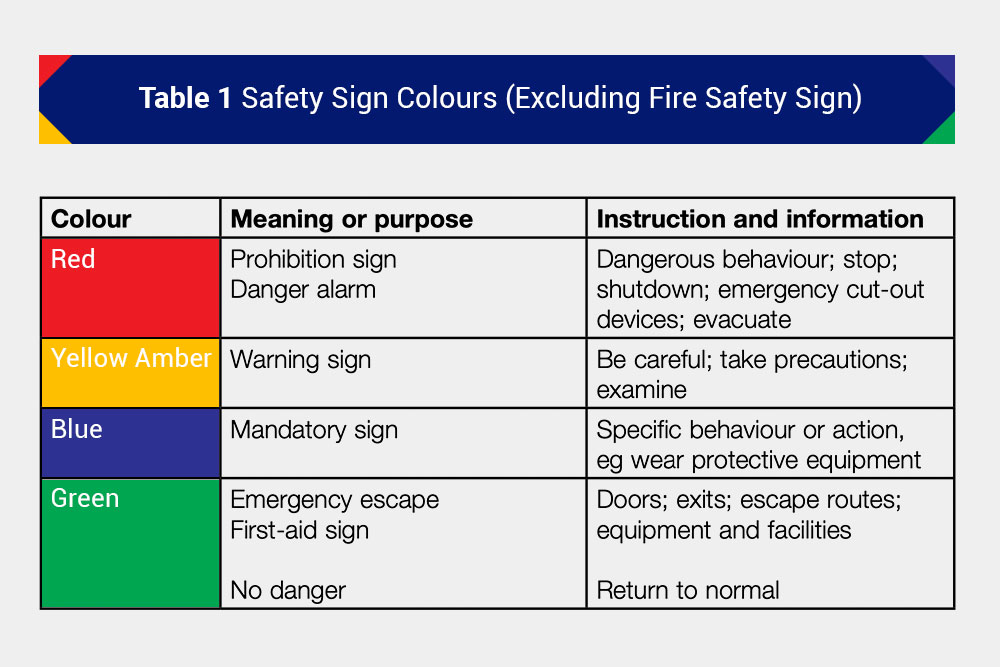
Types of Construction Signs
To know the type of construction signs you need, you’ll first need to conduct a site risk assessment.
This process will help you identify hazards and apply relevant control measures. Once you’re confident you’ve done everything practicable to eliminate or mitigate risks, you can consider if using signs can make your site even safer.
A range of signs might work for your site, and legislation allows for some customisation. But whatever you do to a safety sign must not change its ‘intrinsic features’ outlined in the Regulations.
Prohibitory Signs
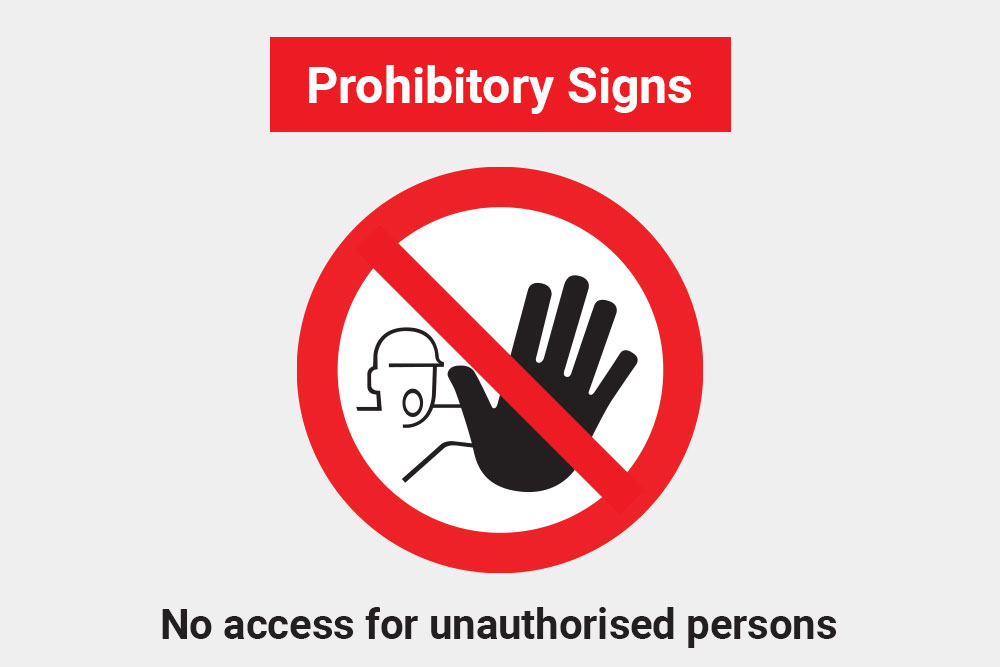
Used to warn people certain behaviours are not allowed.
Intrinsic features:
- Round shape
- Black pictogram on a white background
- Red around the edges and diagonally across the sign (the red parts should cover at least 35% of the sign’s surface area)
General Warning Signs
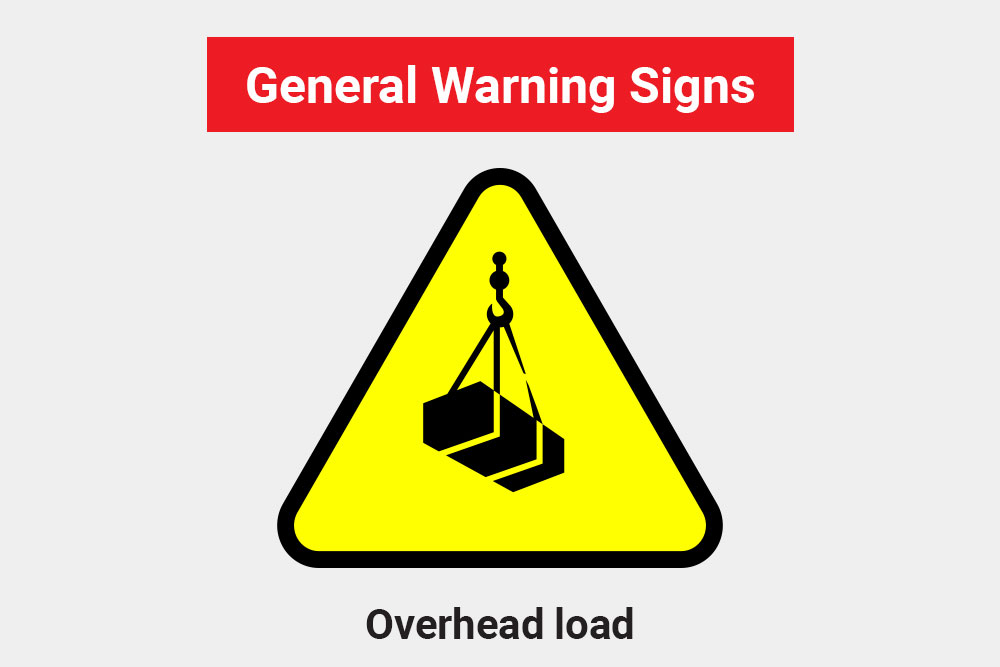
Used to warn of potentially harmful substances or situations.
Intrinsic features:
- Triangular shape
- Black pictogram on a yellow background (the yellow part should cover at least 50% of the sign’s surface area)
- Must use black around the edges
Mandatory Signs
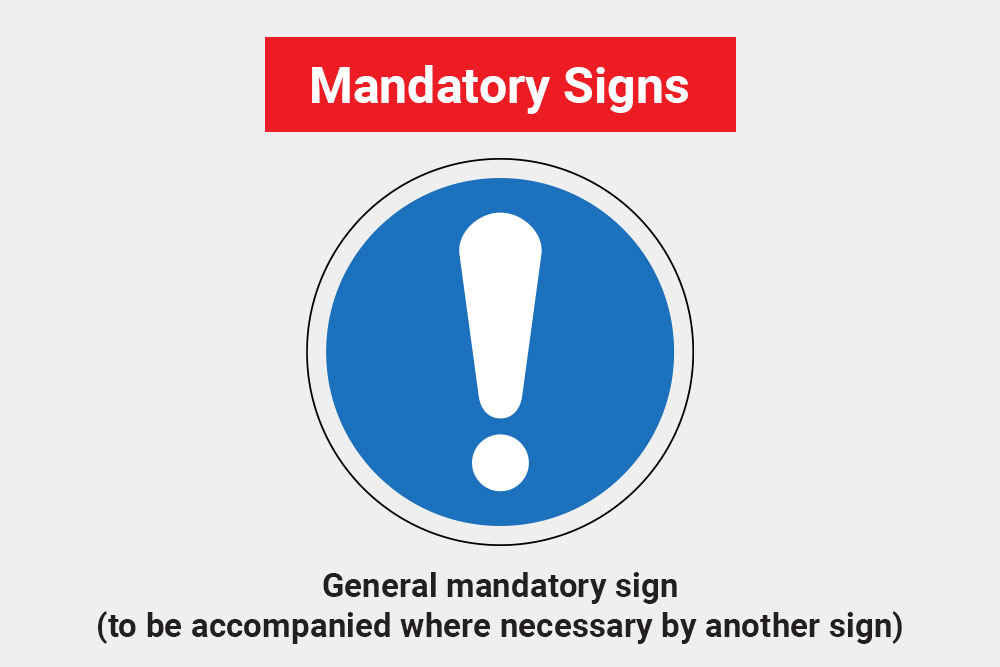
Used to instruct employees on compulsory behaviours, such as using PPE or a specific road crossing for pedestrians.
Intrinsic features:
- Round shape
- White pictogram on a blue background (the blue part should cover at least 50% of the sign’s surface area)
Emergency Escape / First Aid Signs
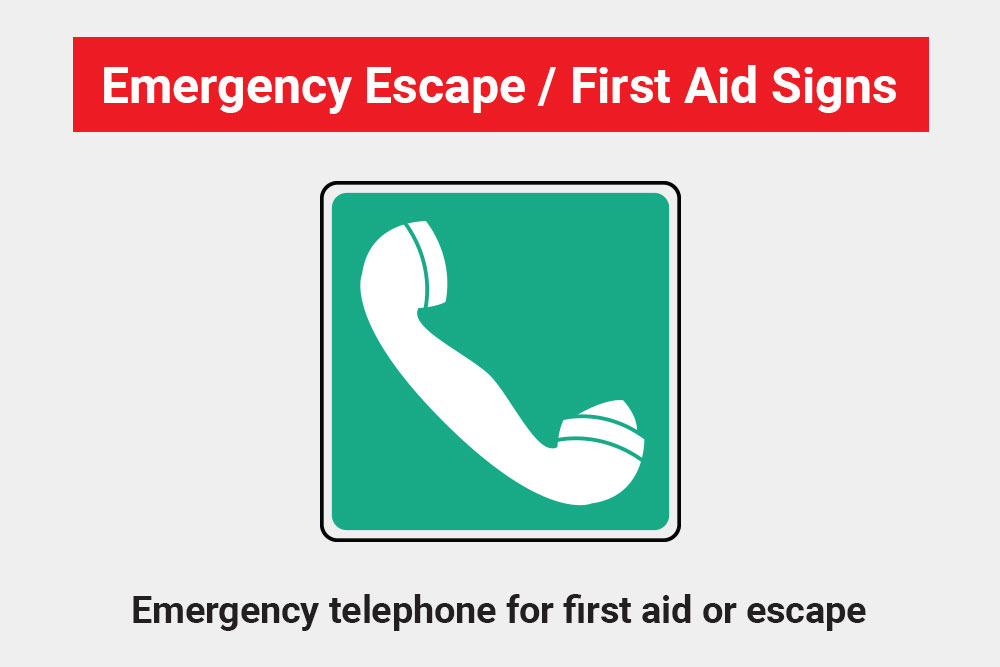
Used to direct employees towards fire escapes or first aid resources, such as emergency eyewash stations or first-aid kits.
Intrinsic features:
- Rectangular or square shape
- White pictogram on a green background (the green part should cover at least 50% of the sign’s surface area)
Firefighting Signs

Used to direct employees towards firefighting equipment, such as extinguishers or ladders.
Intrinsic features:
- Rectangular or square shape
- White pictogram on a red background (the red part should cover at least 50% of the sign’s surface area)
Chemical Labelling and Packaging
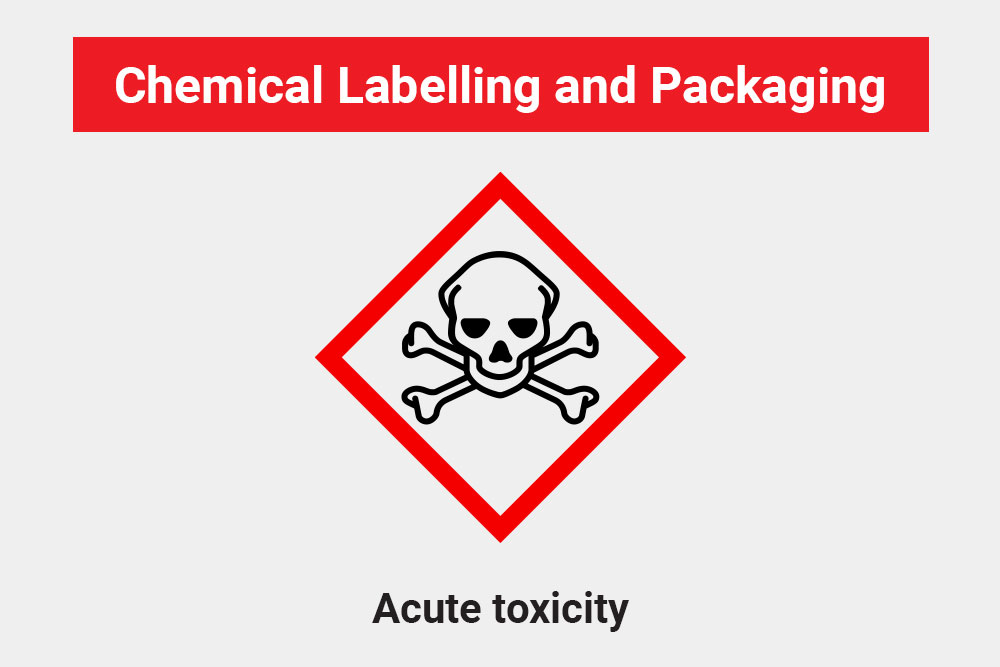
Chemical labels aren’t technically part of the Regulations but are often referenced alongside other construction signs.
These warning signs have no intrinsic features because they can’t be altered. Suppose you have hazardous chemicals present on your site. In that case, you need to select the most appropriate warning sign that exists and use it without modification.
Acoustic Signals
Separate from the Safety Signs Regulations, the Provision and Use of Work Equipment Regulations 1998 (PUWER) demands that all equipment feature warning signs to help make it safer. Audio warnings can fulfil this requirement.
Any acoustic warning should be loud enough to be heard over the ambient noise. You must also consider any employees who might have their hearing impaired by PPE. However, the volume cannot risk your employees’ hearing, so adjust levels accordingly.
Audio warnings should also be clear and only ever played one at a time.
How to Know the Signs You Need
Your safety sign requirements will be unique to your workplace or construction site. And the only way you can know which type of construction sign you need is by conducting a site risk assessment first. This way, you can be sure you’ve identified all site hazards and be confident your safety signs are effective.
And risk assessments can only be conducted by competent people with the right combination of skills, knowledge and training. Our online Construction Risk Assessment Training course teaches you how to perform risk assessments.
Suitable for anyone in construction, you’ll learn how to conduct risk assessments specific to your industry and apply control measures correctly to keep workers safe. You can support compliance, prevent the costs of a workplace incident and keep your next construction project running smoothly.






















































































































































































































































































































































































































































































































































































































































































































































